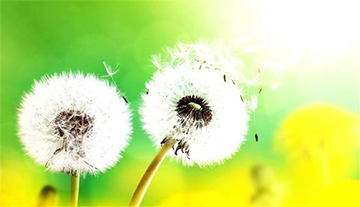Important Facts For Prelims
Pollen Calendar: Chandigarh
- 08 Sep 2021
- 2 min read
Why in News
The Post Graduate Institute of Medical Education and Research (PGIMER) and Panjab University have created a Pollen Calendar (PC) for Chandigarh, arguably the first for any city in India.
- The pollen calendar was created after studying airborne pollen and its seasonal variations for about two years.
Key Points
- About:
- PCs represent the time dynamics of airborne pollen present in a particular geographical area. They yield readily accessible visual details about various airborne pollen present throughout the year in a single picture.
- PCs are location-specific, with concentrations closely related to locally distributed flora.
- Europe, UK and the US are using regional pollen calendars in a big way to prevent and diagnose allergic rhinitis/hay fever and predict the timing and severity of the pollen season.
- Pollen:
- Pollen grains are male biological structures with the primary role of fertilisation, but when inhaled by humans, they may strain the respiratory system and cause allergies.
- Pollen is released by plants, making millions of people suffer from hay fever, pollinosis and allergic rhinitis.
- About 20-30% of the population suffers from allergic rhinitis or hay fever in India, and approximately 15% develop Asthma.
- According to a study by PGIMER, Airborne pollen dominating seasons are spring and autumn with maximum species when the phenological and meteorological parameters are considered favorable for pollen grains' growth, dispersion, and transmission.
- Other Solutions:
- Planting monoecious plants (male and female flowers on the same plant). Hibiscus, lilies, and holly are examples of such plants.
- Planting trees/shrubs that release no or little pollen. Trees such as palms, nettle, safeda, white mulberry (shahtoot), congress grass, pine, have a high incidence of pollen.
- Non-allergic or entomophilous plant species such as rose, jasmine, salvia, Bougainvillea, Raat ki rani and sunflower.





